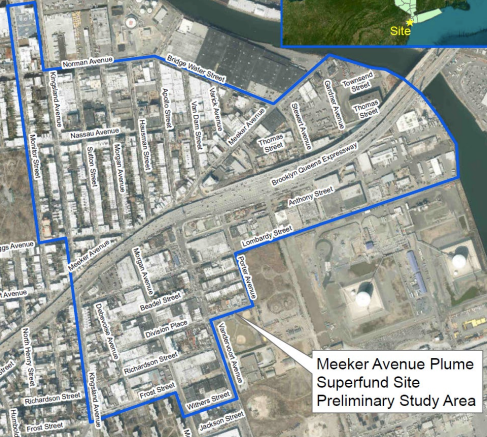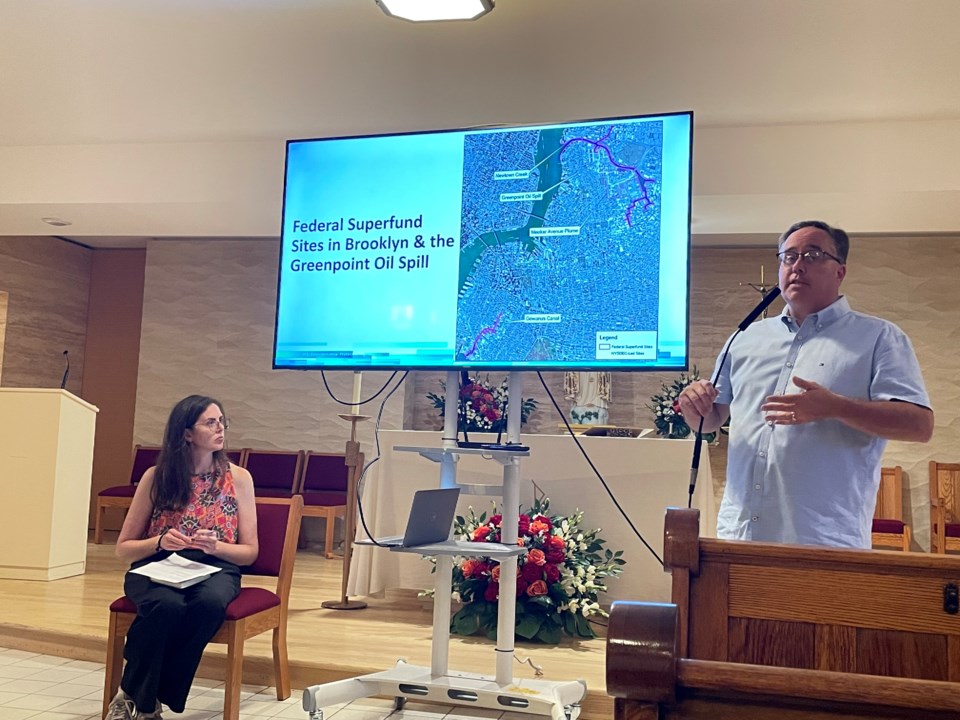As more than two dozen buildings currently undergo contamination mitigation for dangerous levels of chlorinated volatile organic compounds in and around the Meeker Avenue Plume Superfund site in Greenpoint, federal officials say the exposure rate will likely increase.
At a Community Advisory Group meeting at the St. Stanislaus Kostka Church on July 10, John Brennan, the Remedial Project Manager of the Superfund site run by the U.S. Environmental Protection Agency, said there are more buildings that will likely be found as contaminated as testing of the surrounding area continues.
“There’s 26 homes where the state installed mitigation systems that are still running today. There are some additional to that that installed mitigation systems on their own, but because they didn't do it under state oversight, we keep the number at 26,” said Brennan. “It’s probably in the low 30s.”

So far, New York state has tested 166 buildings and the EPA has tested more than 40 in the Meeker Avenue site investigation area, which has about 900 total properties. EPA testing found three residential properties that required further monitoring after sampling a public school, 11 public housing buildings and 18 residential structures as of December 2023.
In February and March of 2024, the EPA sampled 18 more properties with the results set to be shared with the public in the coming months.
“What makes it such a challenge is that there are six or seven different source areas at least that the state has identified. There’s probably more, in fact my guess would be that there is more,” Brennan said at the meeting attended by about 20 area residents. “What we need to do is find those source areas. Get our hands around where all the contamination is which we don’t know. That area is not delineated completely around the investigation area.”
There are 40 more monitoring wells that will be installed to further track the groundwater and concentrated levels of CVOCs, on top of the more than 340 wells already present in the area. The additional wells are slated for completion around October and will be followed by testing which will take five to six weeks.
So long as the groundwater stays contaminated, continued monitoring and mitigation systems will persist, according to the EPA. No concrete timetable for a completed cleanup was given.
A health assessment of the people living in the Meeker Avenue Plume area conducted by the Agency for Toxic Substances and Disease Registry, in conjunction with the New York State Department of Health, is currently in the works.
The most harmful exposure to CVOCs is through soil vapor intrusion, a process by which vapors from underground seep into a building or structure, and dubbed as a "major health concern" by the EPA. Thhe agency will continue testing properties in the Meeker Avenue study area for five years, before cleanup can begin.
One challenging aspect is getting every landlord and property owner to agree to inspections, EPA officials have said in the past.
Since March 2022, the Meeker Avenue area has been designated as a superfund site, a result of commercial businesses in the area dumping the toxic chemicals in the area decades ago. Substances found on the site include tetrachloroethylene, vinyl chloride and trichloroethylene, which are either carcinogenic or likely to be carcinogenic to humans.
The 190-acre site was discovered during the cleanup of the Greenpoint Oil Spill in 2005. About 17 to 30 million gallons of oil spilled and leaked, greater than the amount spilled in the Exxon Valdez oil spill in 1989, from various companies, mainly ExxonMobil, over 140 years in and around the Greenpoint area.
In 2007, the New York State Department of Environmental Conservation began testing the indoor air of properties in the Meeker Avenue Plume site and began installing sub-slab depressurization systems. As testing continues, more and more mitigation systems are expected to be installed.
The next public meeting on the Superfund site is slated for September.




